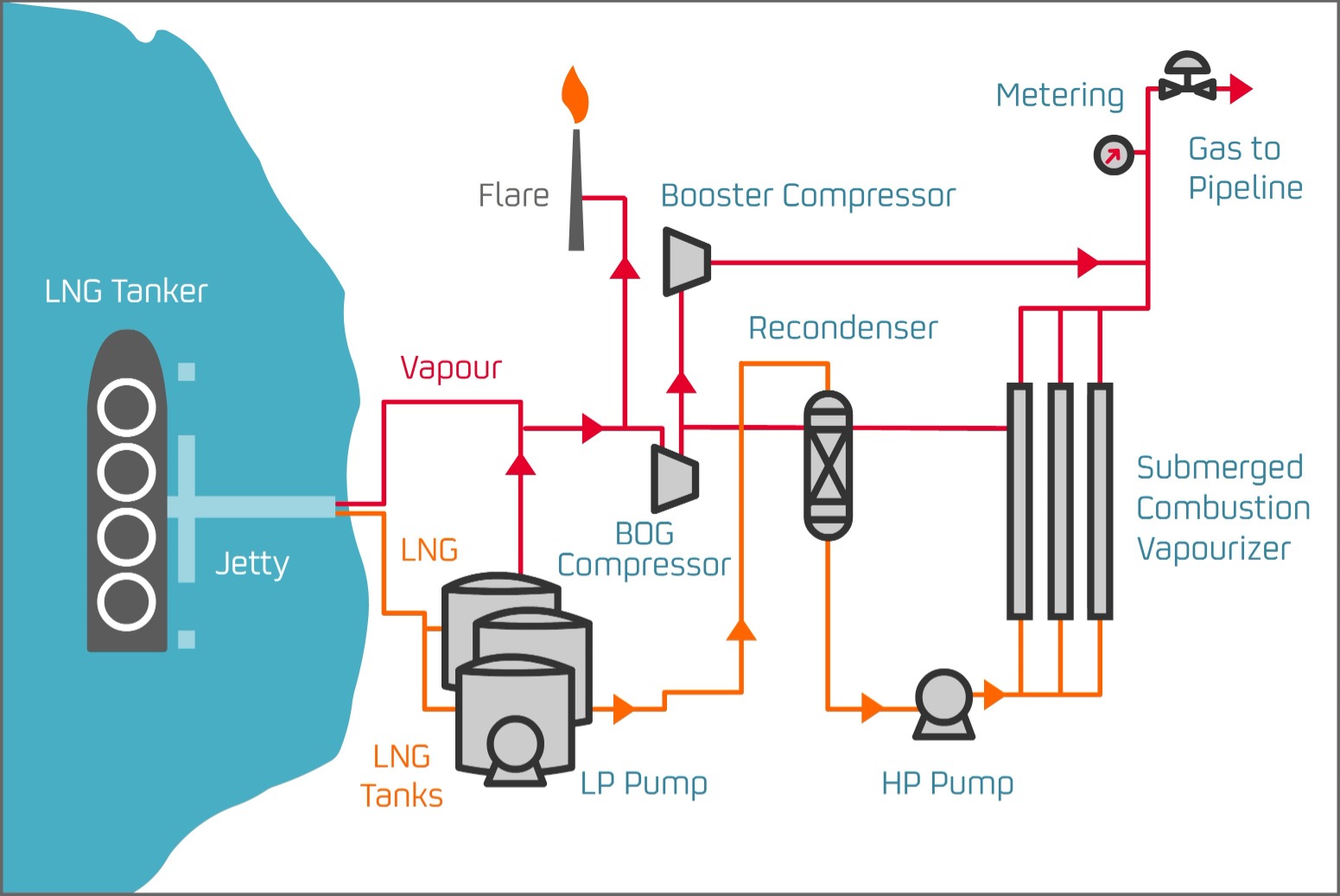LNG Process
Liquefied natural gas, or LNG, is the liquid form of natural gas.
It is a clear, colourless, odourless, clean burning fuel. It is taken out of the ground as natural gas, and becomes a liquid when it is cooled to -162 degrees Celsius.
The cooling process reduces the volume of natural gas by more than 600 times – which makes it easier and safer to store and transport.
The LNG Process
LNG arrives at Saint John LNG’s jetty in specially designed double hulled ships.
There are four unloading arms to transfer LNG from the ship – two arms for offloading liquid, one arm for vapour and one dual purpose vapour or liquid arm. The arms provide a flexible connection to the LNG tankers to accommodate the wide range of tidal movements in the Bay of Fundy, as each ship goes through at least one tide cycle during offloading.
After the unloading arms are securely connected, the ship begins pumping LNG through the arms, into the piping system at the terminal, leading to one of three large LNG storage tanks. Depending on the size of the ship, the entire unloading process takes approximately 24-36 hours.